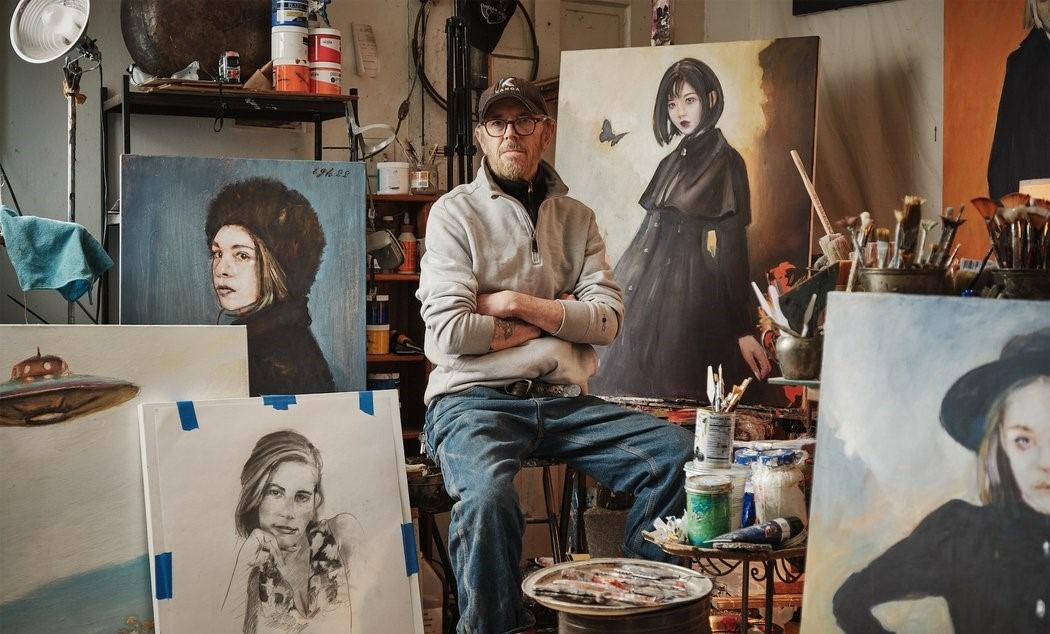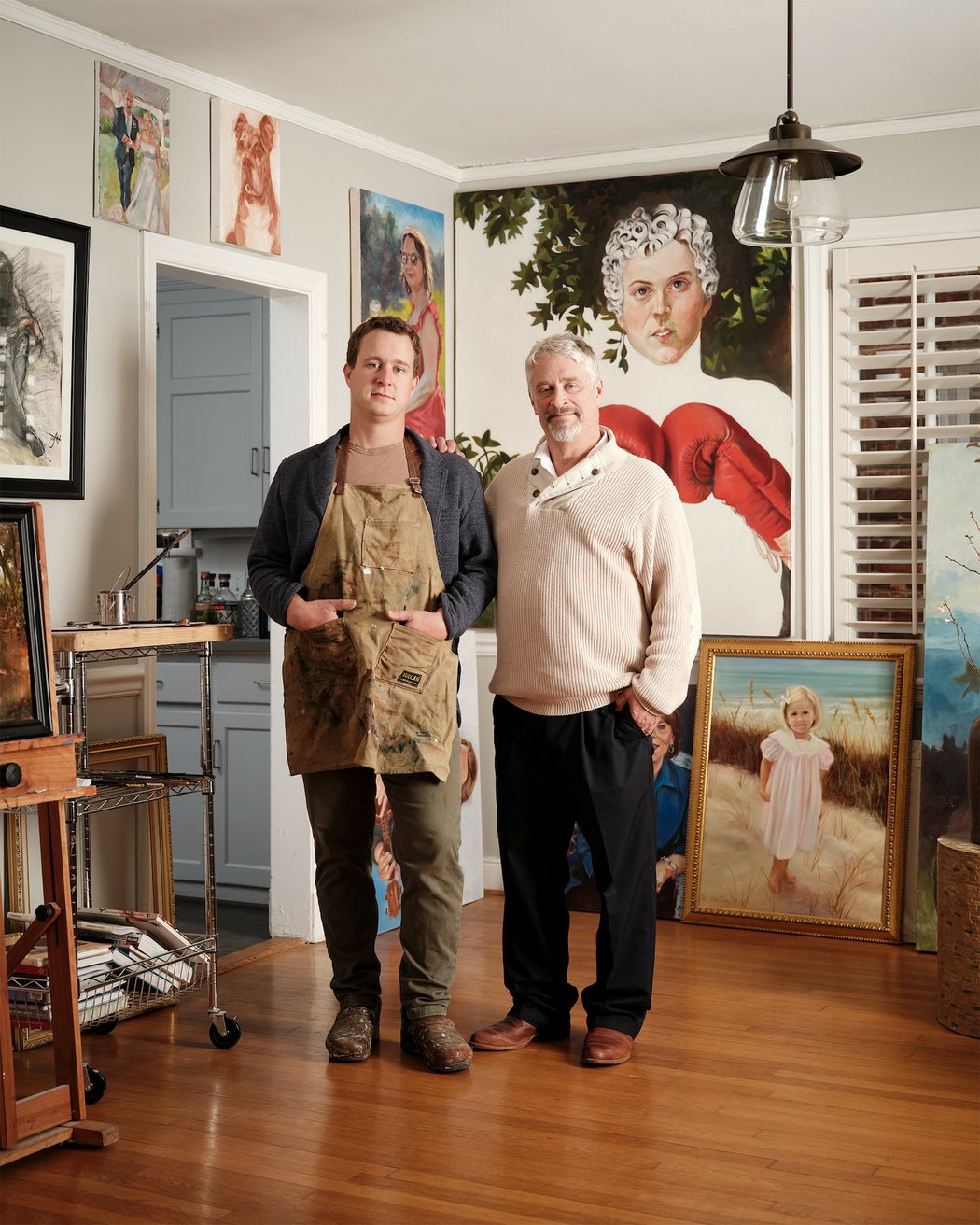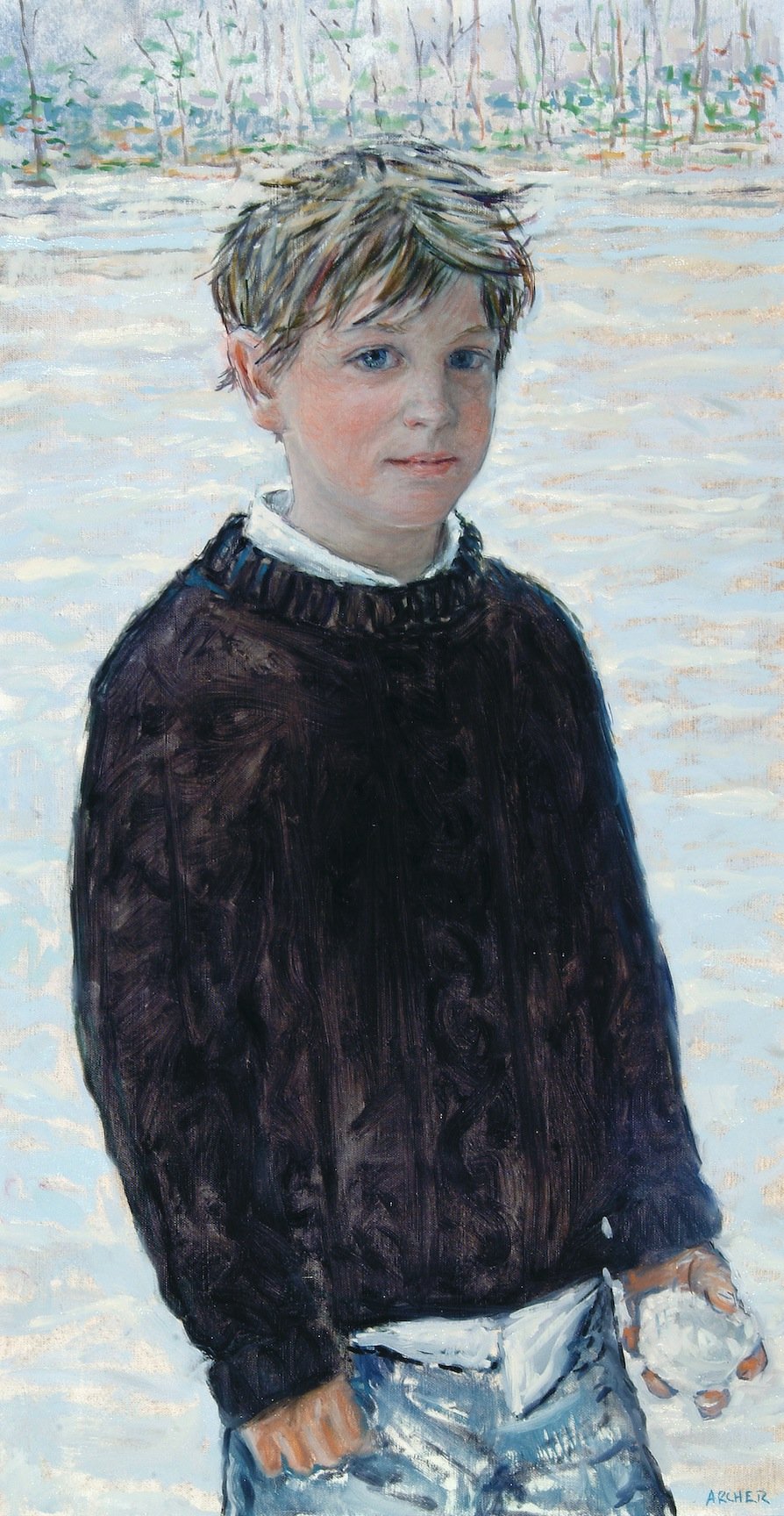The online edition of Virginia Living magazine is currently running a feature article I wrote for the June print edition, about the tradition of portrait painting in the South, and in Virginia in particular. A+A is pleased to re-post the article in two parts, today and tomorrow.
“Excited about college?” In 1980, Fielding Archer and his father were halfway to Hampden-Sydney, driving west on Route 60. The question should have been an easy layup. Archer hadn’t applied anywhere else.
Instead, it plucked at a gnawing doubt. “Actually,” he told his father. “I’m not.”
“As a kid, all I did in school was art,” Archer recalls. “Drawings and caricatures of teachers that I’d get in trouble for. I kept pushing it.”
Brake lights flashed red as John Archer slowed to pull off the road. He shifted the car into park, then turned to his son. “What about VCU?” he asked. “For your art?” The roadside conversation reordered Archer’s life.
They turned around to head east for VCU’s School of the Arts, where dean Murry DePillars handed Archer an application. “I filled it out on the spot,” he says, “and started two days later.”
Upon graduation, Archer won a residency at the Skowhegan School of Painting and Sculpture in Maine where, one rainy afternoon, he peered into a mirror and painted his own reflection. Nine self-portraits later, the works caught the eye of a patron touring the studios. Would he paint her grandchildren, she asked?
The commission was Archer’s first. For nearly 40 years, he says, “it’s never stopped.”
The Portrait’s Southern Roots
Today, Fielding Archer is among Virginia’s most sought-after portrait artists, advancing a tradition that has thrived below the Mason-Dixon line for centuries.
“In the South, itinerant portrait artists would travel from town to town in wagons loaded with canvases,” says Meg Clement, a Richmond-based broker with Portraits, Inc., a Birmingham agency founded in New York in 1942. “They’d already painted the body,” she explains. “When they found a customer, they’d add the face to complete the painting. It was quick, so they could move on to the next town.”
Portraits are “very much a Southern thing,” says Richmond artist Tobin Karicher, who painted in New York after earning a fine arts degree at VCU. “I knew a guy in Brooklyn who came South once a year to get all his work,” he says. “Portraits exist everywhere, but they’re deeply rooted in the South. In Virginia I see it more than anywhere else.”
Blacksburg portrait artist Phil Ramsey traces those roots to the English tradition of portraiture, which was adopted by wealthy Southerners. “New money doesn’t buy art—but old money does,” he says. “You’ll see portraits in traditional old Southern houses.”
Capturing Character
Ramsey’s son, Wyatt, also a portrait artist, says the commissioning process can be daunting for clients. “Most people don’t have the language to talk about art, much less portraiture,” he notes. That’s where Clement comes in, playing matchmaker for the artists she represents, while educating clients on the myriad decisions that go into a successful portrait commission.
“It takes time to determine the best way to capture a subject,” Clement says. She walks clients through the nuances of painting styles—tight or loose? oils or pastels?—and mulls questions of setting, canvas size, background, clothing, even the frame.
“So much of our personality is revealed through gestures; the particular way a person folds their hands, or how they sit,” Clement explains. “I suggest a full- or three-quarter length portrait to truly convey the subject.”
Unlike a landscape or still life, portraiture requires the artist to capture the essence of an assigned subject. “It’s a given for the portrait to look like the person,” says Wyatt Ramsey. “But getting it to feel like that person? That’s the hard part.”
A skilled portrait artist must also understand anatomy, bone structure, tendon, and muscle. There’s little room for interpretation when it comes to painting an eye, a nose, or a pair of lips, says Phil Ramsey. “It’s very similar to surgery—everything is exact and precise, and if it’s off, it’s all wrong. John Singer Sargent said, ‘If you change the mouth a little bit, it changes everything on the canvas.’”
Tomorrow: Understanding anatomy.
For more, go here.








